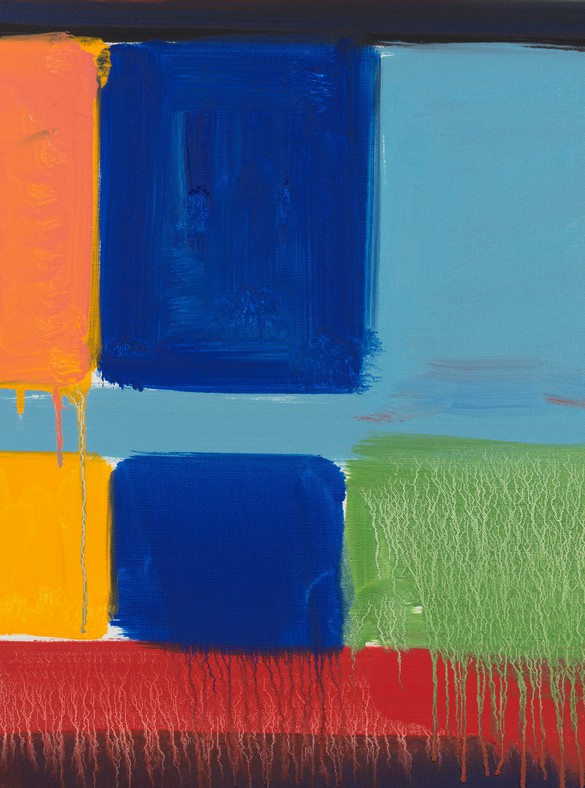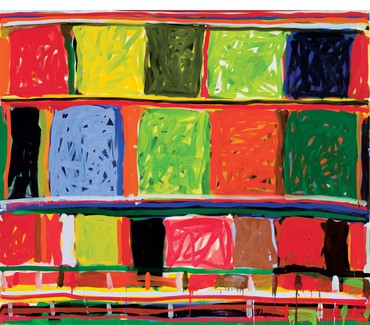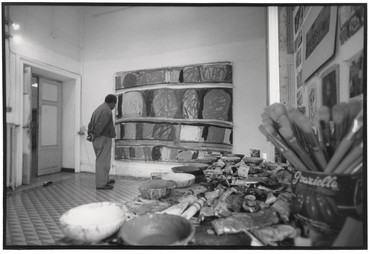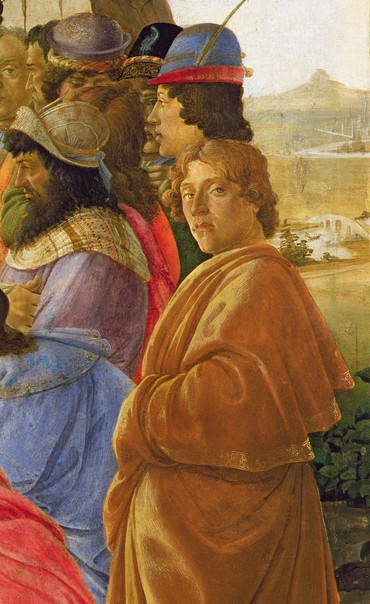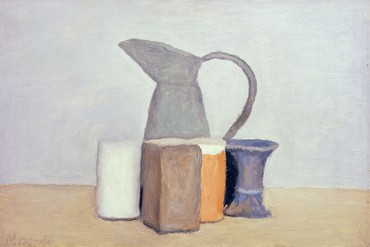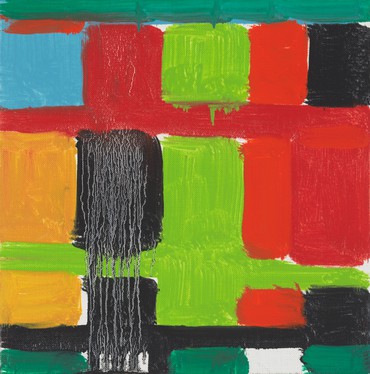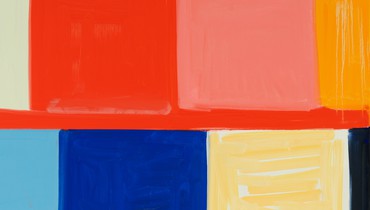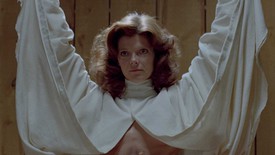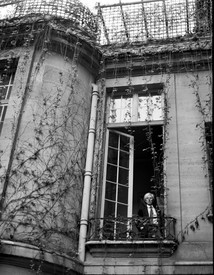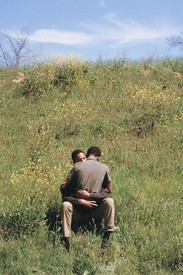
Louise Neri has been a director at Gagosien since 2006, working with artists and developing exhibitions, editorial projects, and communications across the global platform. A former editor of Parkett magazine, she has authored and edited many books and articles on contemporary art. Beyond the exhibitions she has organized for Gagosien, she cocurated the 1997 Whitney Biennial and the 1998 São Paulo Bienal, among numerous international projects.
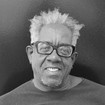
Stanley Whitney’s vibrant abstract paintings unlock the linear structure of the grid, imbuing it with new and unexpected cadences of color, rhythm, and space. Deriving inspiration from sources as diverse as Piet Mondrian, free jazz, and American quilt-making, Whitney composes with blocks and bars that articulate a chromatic call-and-response in each canvas. Photo: Miranda Leighfield
Louise Neri Stanley, do you realize it’s nearly thirty years ago that we met in New York?
Stanley Whitney I remember it well.
LN At your studio on Cooper Square.
SW That’s right!
LN One of the points of departure for discussing how to make your first show with the gallery—in Rome—is the impact that living and working in Rome during the 1990s has had on your work, the paradigm shift that occurred.
SW I would say that it was the beginning of my mature work. Rome and then Egypt were where I put the last pieces of the puzzle together.
LN How so?
SW The experience of being there, especially the ancient buildings, brought architecture into my painting. When you walk into the Roman Colosseum, you really feel, from the first brick to the last brick, how human they are. And then walking around, you see ancient and modern Rome side by side and how they relate, in terms of the streets, the apartment buildings; you come across things, exposed walls, ruins . . .
LN And the incidence of color.
SW Yes. The color of the architecture, and the different light qualities in sun and shade. These kinds of experiential shifts became interesting to me. So, Rome was a really important part of being able to bring all these things together.
LN Concretely, what appeared in your painting around that time was a tectonic, partitioned structure, in addition to it being rhythmic and dynamic. Can you discuss this eureka moment and the mechanics of the shift?
SW When I was in Italy, I started looking at Giorgio Morandi. Morandi was key to my being in Italy: the way he put things together, how quiet they were, how things touch.
LN He rarely used outlines.
SW Yes, exactly, it was more about shape and mass. So I started getting rid of some of my own gestures. I was freaking out, wondering what it was going to turn into. But I just followed the painting process and it told me what to do. And little by little, the mark-making, the hand gesture, started to turn into shape. Which I was quite surprised about. But then I realized: the color is in the space. For example, take Mondrian and his act of making a black line, a red line, or a blue line: physically, it’s nothing, but mentally, it’s huge—just to shift that line. Mondrian was another key for me: when I started getting more into abstract painting, I wanted more freedom. I really wasn’t a storyteller and I wanted to have a more universal language.
LN Can you elaborate?
SW As a young painter, I was always trying to figure out what my subject matter was. I didn’t know. To me, painting is painting—Velázquez, Veronese, even Courbet’s paintings of stags in the snow excite me. So I’m not a strict modernist in terms of how I look at painting. Every artist has to come up with their own idea of subject matter, and I had a lot of issues to work through, in terms of my identity as a painter. When I first came to New York in 1968, it was all about Color Field painting, which I was very critical of. I liked the color, but—
LN The color but not the field? [laughs]
SW Yes, it really was that—the color, not the field. I really didn’t know how I would fit into the modern idea of painting. So I went back to black-and-white drawing. And slowly, slowly, I made my way through my drawing to the color. I was thinking to myself, I want space like Pollock, but I want color and depth like Rothko, which seem so opposite of each other. How could I have both? At that time there were so many rules and regulations in New York about painting. And I was trying to figure out what I had, what I could bring to it, where I fit in. So during those years I struggled and struggled and struggled . . .
LN So what did you have that was yours?
SW Music was always there for me as a kind of rhythm—getting in rhythm, having rhythm. People sometimes find my paintings odd because of the rhythm. The idea of a painting being so still but so rhythmic at the same time. So getting the rhythm of the painting is really important to me; there’s no beginning to it and no end, and I can shift around in it from any one spot. And I want to make paintings to be lived with, not just looked at. When you live with my paintings, you begin to see different things; they’re always different.
LN So, is color the structuring rhythm?
SW I always say that the color makes the structure, the structure doesn’t make the color. I don’t build a structure and then fill in the color. I wanted to devise a structure that would give me total freedom with color. As a young painter, I would look at, say, Corot and admire the little red dot in the corner of a painting while understanding that he had to do all the rest before he could paint that red dot. Whereas I wanted to develop an approach that would allow me to put down whatever color I want immediately.
Music was always there for me as a kind of rhythm—getting in rhythm, having rhythm.
Stanley Whitney
LN Can you speak more about the impact of music on your art?
SW By the time I was in high school, around 1964, I was listening to Ornette Coleman’s Shape of Jazz to Come, John Coltrane’s Love Supreme, Thelonious Monk, Charlie Mingus, and others; these musicians were great revelations to me. Before that, I was thinking about joining the army! [laughs] But when I discovered jazz, I realized that there was a whole other world. So when I first went to art school, I thought of Cézanne in terms of Charlie Parker and the rhythm. After five years at art school in the Midwest, looking at Munch and Goya, I came to New York and went to jazz clubs—Five Spot, Village Gate. I wanted to hang out with the musicians—but I knew I wasn’t one of them.
LN Did Pop art interest you?
SW As an artist, you decide what to bring into your studio, and I didn’t want Pop, I didn’t see it. Except maybe for the color.
LN What about its humor and declarative quality?
SW Yes, the idea of caricature, the cartoon, is important to me. Cartoons are so American. When asked what he wanted from America, Picasso famously responded, “Bring me the Sunday paper with the cartoons and a baseball uniform”!
More importantly, though, I met Robert Rauschenberg and started hanging around with him and the Castelli crowd. But being a black artist, it wasn’t a scene that I was interested in; there weren’t many black artists downtown. Interestingly, there was a black presence around Clement Greenberg, because of his love of jazz. So if you went to a Greenberg party, there it was. Not at the other parties, which were really segregated. So that was one reason to hang out in Greenberg’s scene. But still, I found it lacking, and so I dropped out of it and became more independent.
LN Did Rauschenberg influence you in any way?
SW Yes, he was so brilliant and interesting. There was a kind of freedom in him. He could make art from nothing. Once we were walking around the streets and he saw an old fire hose. The next time I saw that hose, he had made a work out of it, adding a piece of blue glass for a light, and placing it on top of a piece of metal. So I learned from watching him how to just pick things up and use them. When I was living in Rome and visited the Etruscan Museum and saw the sarcophagi all stacked up in there, the thought suddenly came to me: I’ll stack the color in my paintings. I realized I could get to the color immediately without having to do anything else first. So I’m always thinking about what I can get from who—even the surface of my paintings comes from looking at Botticelli’s paintings, so rich and yet so matte.
LN Were there New York painters who mattered to you at the time?
SW I did admire Jackson Pollock’s sense of freedom. I think Pollock will haunt every painter in New York forever. He made painters get rid of their brushes, paint with a stick, paint with a broom, paint with a mop, paint on the ground. I tried all that stuff, but then I decided to return to a more traditional kind of painting. Once I left the New York School, so to speak, I was totally on my own. I was thinking about the idea of space and music; I was thinking about how Munch painted, about Cézanne, and slowly things were coming together for me. The last piece of the puzzle was density. I thought that if I put the colors next to one another, I would lose the space. Then I realized—the space is in the color.
With countries, borders are fought for. In my paintings, the colors are fought for.
Stanley Whitney
LN Can you describe your current process in more detail?
SW I just start painting. I don’t plan it out. Since I know what the form is, I can start anywhere, get there immediately, and just keep working. I don’t make color studies in advance. I put a color down and then I respond to it. Once you have something on the canvas, it’s the beginning of a relationship and I start to deal with it.
LN How did you arrive at the square format that now typifies your paintings?
SW During those first years in Italy, all my paintings were rectangular, landscape format. I got to the square by thinking about Agnes Martin, and the idea of a non-shape.
LN You mean neutral, symmetrical?
SW Yes, a neutral kind of space. It was difficult for me to establish a rhythm with the square because it was a tighter space, but I enjoyed the challenge. I had to stay center stage, not move left or right. And I’m staying right here!
LN Can you also discuss the variance in scale within this square format, from twelve inches right up to ninety-six? Each of them has quite a distinct character.
SW The twelve-by-twelve-inch painting is about a hand gesture, whereas the seventy-two-by-seventy-two, or the ninety-six-by-ninety-six, requires me to use my entire body. In between it’s like easel painting, although I fix them to the wall.
LN Do you revisit paintings once you’ve painted them? Do you ever work back over them?
SW No, I don’t, I really don’t. I can’t. I’m on and off them very quickly.
LN Perhaps this is why they live in a sort of perpetual dynamic state. They don’t seem constrained in any sense.
SW That’s right. When I paint them, I never know where the edge is going to be. I think of colors as borders. With countries, borders are fought for. In my paintings, the colors are fought for.
Artwork © Stanley Whitney; photos: Rob McKeever, unless otherwise noted
